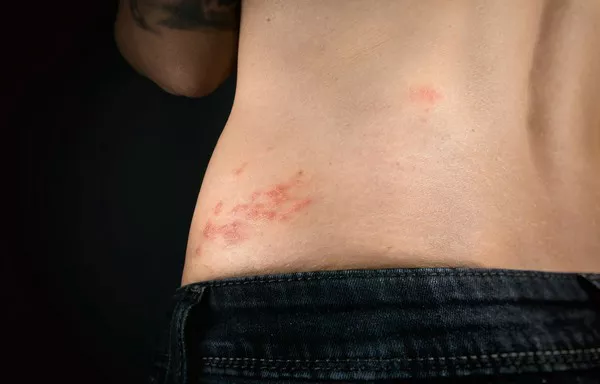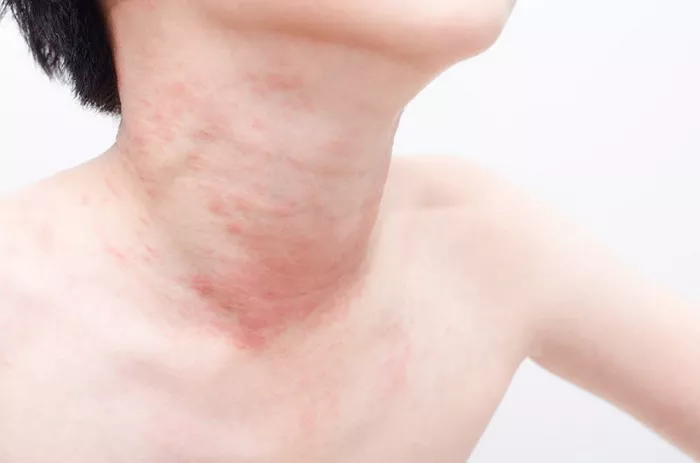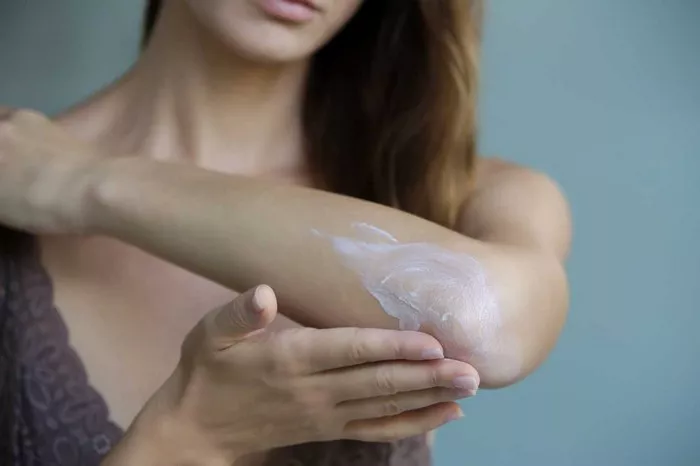Shingles, also known as herpes zoster, is a viral infection that causes a painful rash. This condition can be quite distressing and often leads to various symptoms, including skin sensitivity. In this article, we will explore the question: “Is shingles sore to touch?” We will delve into the causes, symptoms, treatment options, and ways to manage discomfort associated with shingles.
What is Shingles?
Shingles is caused by the varicella-zoster virus, the same virus responsible for chickenpox. After a person has chickenpox, the virus lies dormant in the nerve tissues. Years later, it can reactivate, leading to shingles. This condition primarily affects adults, especially those over 50 years old, but it can occur in younger individuals as well.
How Does Shingles Develop?
When the varicella-zoster virus reactivates, it travels along nerve fibers to the skin. This results in inflammation and a painful rash. The rash usually appears on one side of the body, often in a band-like pattern. The areas most affected are the torso, face, and neck.
Symptoms of Shingles
Shingles typically presents with a variety of symptoms, which may include:
Pain and Sensitivity: Before the rash appears, individuals often experience pain, burning, or tingling in the affected area. This discomfort can be intense and is often described as a sharp or stabbing sensation.
Rash: The rash usually develops several days after the initial pain. It starts as red patches that turn into fluid-filled blisters.
Soreness: The area around the rash may feel sore to touch. This is due to the inflammation caused by the virus.
Fever and Fatigue: Some individuals may experience a low-grade fever and general fatigue.
Headache: Headaches can also accompany shingles, adding to the overall discomfort.
Is Shingles Sore to Touch?
Yes, shingles can be very sore to touch. The sensitivity of the skin in the affected area is a common symptom. Here’s why shingles is sore to touch:
1. Nerve Involvement
Shingles affects the nerves, leading to inflammation. When the virus reactivates, it irritates the nerve fibers. This irritation can make the skin hypersensitive. Even light touches or clothing can cause pain.
2. Inflammation
The body’s immune response to the virus causes inflammation in the affected area. This inflammation can make the skin feel tender and sore. The area may become red and swollen, increasing sensitivity.
3. Blisters and Rash
As the rash develops, blisters form. These blisters are filled with fluid and can be painful. Touching them can cause discomfort and may even lead to further irritation or infection.
4. Postherpetic Neuralgia
Some individuals may experience postherpetic neuralgia (PHN), a condition where pain persists long after the rash has healed. PHN can lead to chronic sensitivity in the affected area, making it sore to touch even after the shingles infection has resolved.
Diagnosing Shingles
A healthcare professional can usually diagnose shingles based on the characteristic rash and symptoms. However, in some cases, additional tests may be necessary, including:
Viral Culture: A sample of fluid from a blister can be tested to confirm the presence of the varicella-zoster virus.
Blood Tests: Blood tests can check for antibodies to the virus, indicating a past infection or reactivation.
Treatment Options for Shingles
While there is no cure for shingles, several treatment options can help manage symptoms and reduce discomfort.
1. Antiviral Medications
Antiviral medications, such as acyclovir, valacyclovir, and famciclovir, can help reduce the severity and duration of shingles. These medications are most effective when taken within 72 hours of the rash’s appearance.
2. Pain Relief
Over-the-counter pain relievers, such as ibuprofen or acetaminophen, can help manage pain and reduce inflammation. In some cases, a doctor may prescribe stronger pain medications.
3. Topical Treatments
Topical creams containing capsaicin or lidocaine can help numb the area and provide relief from soreness. Calamine lotion may also soothe itching and irritation.
4. Corticosteroids
In some cases, corticosteroids may be prescribed to reduce inflammation and pain. These should be used under a healthcare professional’s guidance.
5. Rest and Hydration
Getting plenty of rest and staying hydrated is essential for recovery. This can help the immune system fight the virus and alleviate symptoms.
Home Remedies for Sore Skin
In addition to medical treatments, several home remedies can help soothe sore skin during a shingles outbreak:
1. Cool Compresses
Applying a cool, damp cloth to the affected area can reduce inflammation and soothe pain. Be sure to avoid ice directly on the skin, as this can cause further irritation.
2. Oatmeal Baths
Taking an oatmeal bath can provide relief from itching and discomfort. Colloidal oatmeal is especially beneficial for soothing inflamed skin.
3. Aloe Vera
Aloe vera gel can help soothe the skin and provide moisture. Its anti-inflammatory properties may also aid in healing.
4. Essential Oils
Some essential oils, such as lavender or tea tree oil, may provide soothing effects. However, it’s essential to dilute them before applying to the skin to prevent irritation.
Managing Discomfort
Managing discomfort during a shingles outbreak is crucial. Here are some tips:
1. Avoid Tight Clothing
Wearing loose-fitting clothing can help reduce irritation on the affected area. Tight clothing can exacerbate soreness and sensitivity.
2. Keep the Area Clean and Dry
Maintaining proper hygiene is essential. Gently clean the area with mild soap and water. Pat it dry and avoid scratching or picking at the blisters.
3. Stay Stress-Free
Stress can worsen symptoms. Engaging in relaxation techniques, such as deep breathing or meditation, can help manage stress levels.
4. Follow Up with a Healthcare Provider
If symptoms persist or worsen, it’s essential to follow up with a healthcare provider. They can provide additional guidance and treatment options.
Prevention of Shingles
While shingles cannot always be prevented, certain measures can reduce the risk of developing the condition:
1. Vaccination
The shingles vaccine is recommended for adults over 50. It can significantly reduce the risk of developing shingles and the severity of symptoms if the virus does reactivate.
2. Healthy Lifestyle
Maintaining a healthy lifestyle can strengthen the immune system. Regular exercise, a balanced diet, and adequate sleep are essential for overall health.
3. Avoiding Stress
Since stress can trigger the reactivation of the varicella-zoster virus, managing stress through relaxation techniques is crucial.
Conclusion
In summary, shingles can indeed be sore to touch due to nerve involvement, inflammation, and the presence of blisters. Understanding the nature of shingles and how to manage its symptoms can greatly improve comfort during an outbreak. If you experience symptoms of shingles, it is essential to seek medical attention promptly. Early treatment can help reduce the severity of the condition and alleviate discomfort. By taking preventive measures, you can reduce your risk of developing shingles and protect your overall health.
Related topics:


























